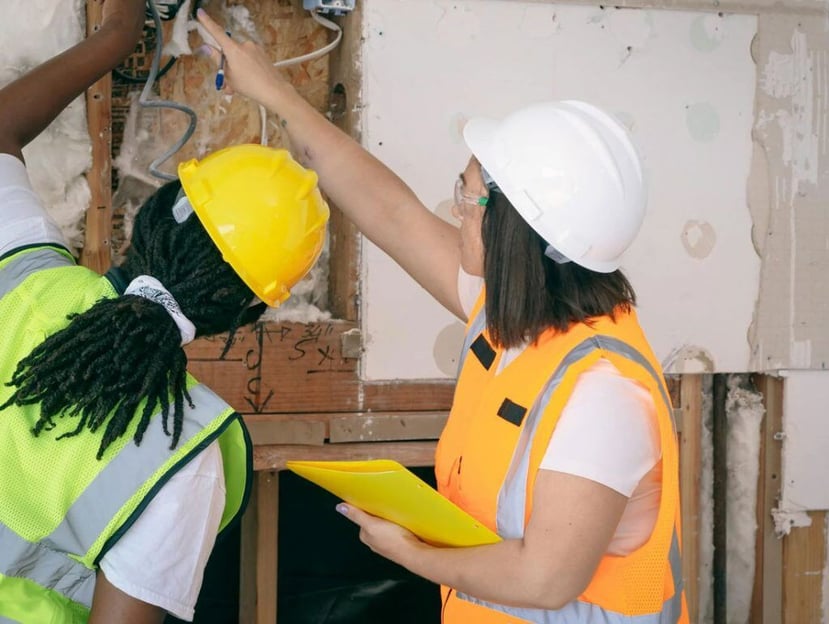Latent Defects in Buildings: Detection, Costs & Legal Rights [Guide]
by Innovus on 13 January 2025
![<span id="hs_cos_wrapper_name" class="hs_cos_wrapper hs_cos_wrapper_meta_field hs_cos_wrapper_type_text" style="" data-hs-cos-general-type="meta_field" data-hs-cos-type="text" >Latent Defects in Buildings: Detection, Costs & Legal Rights [Guide]</span>](https://www.innovus.co.uk/hubfs/latent-defects-janaury-2025.jpg)
In the construction industry, the terms “latent defects” and “patent defects” are often used to describe different types of issues that may arise during or after a building project. While patent defects refer to visible and obvious flaws, latent defects are hidden, underlying problems that may not be immediately apparent. These concealed defects can have serious consequences if left unaddressed, potentially compromising the structural integrity, safety, and long-term value of a property.
So, what exactly are latent defects? A latent defect is a fault in the design, materials, or workmanship of a building that is not visible or readily discoverable during a reasonable inspection. These problems may remain hidden for an extended period, sometimes even years, before manifesting as visible issues or causing significant damage.
In contrast, patent defects are readily observable defects that can be identified through a reasonable inspection. Examples of patent defects include poor finishes, visible cracks, or obvious structural issues. While patent defects should be addressed promptly, the focus of this article will be on the more elusive and potentially more hazardous latent defects.
Common Types of Latent Defects
Latent defects can arise from various sources within a construction project, including:
- Design Defects: Errors or omissions in architectural plans, engineering calculations, or specifications can lead to latent defects in the design phase. These issues may not become apparent until after construction is complete and the building is in use.
- Materials Defects: The use of substandard or defective building materials can result in latent defects that may not be immediately noticeable. This could include faulty products, improperly mixed concrete, or other hidden material flaws.
- Workmanship Defects: Improper installation, construction techniques, or a lack of adherence to building codes and standards can introduce latent defects due to poor workmanship. These issues may not become visible until the building is subjected to certain conditions or after significant time has passed.
Examples of latent defects range from structural issues like inadequate reinforcement or foundation problems to hidden moisture damage, faulty electrical wiring, or improper insulation installation.
Consequences of Unaddressed Latent Defects
The consequences of unaddressed latent defects can be severe, both in terms of safety and financial implications. When left undetected and unresolved, latent defects can:
- Compromise the structural integrity of a building, potentially leading to catastrophic failures or collapses.
- Pose safety hazards to occupants, such as electrical or fire risks.
- Result in costly repairs and remediation efforts once the defects become apparent.
- Expose property owners, managers, developers, or contractors to legal liabilities and lawsuits.
It is essential to identify and address latent defects as early as possible to mitigate risks and protect the long-term value and safety of a property.

The Role of Building Surveys and Inspections
Professional building surveys and inspections play a crucial role in identifying and addressing latent defects in construction projects. Qualified building surveyors and inspectors possess the expertise and specialised equipment necessary to thoroughly assess a property and detect potential issues that may not be visible to the untrained eye.
Through comprehensive inspections conducted at various stages of a construction project, building surveyors can identify latent defects before they escalate into more significant problems. This proactive approach allows for timely remediation and helps mitigate risks associated with hidden defects.
Latent Defects Insurance
Given the significant risks and potential costs associated with latent defects, many construction projects opt for latent defects insurance, also known as structural warranties or building indemnity insurance. This specialised insurance coverage is designed to protect property owners, developers, and contractors from financial losses resulting from latent defects that may manifest after the completion of a construction project.
Latent defects insurance typically covers the costs of repairing or rectifying defects in the design, materials, or workmanship that were not discoverable during the construction process or initial inspections. However, it’s important to note that these policies may have limitations and exclusions, so it’s crucial to carefully review the coverage and terms.
How Innovus Can Help
At Innovus, we understand the importance of identifying and addressing latent defects in construction projects. Our team of experienced building surveyors and inspection professionals are equipped with the knowledge and tools necessary to thoroughly assess properties and identify potential issues, including hidden defects.
Our comprehensive building inspection and defect diagnosis services are tailored to meet the unique needs of each client, ensuring that no stone is left unturned in the pursuit of identifying and mitigating risks associated with latent defects. By partnering with Innovus, you can safeguard your investment and gain peace of mind knowing that any underlying issues will be brought to light and addressed proactively.
Don’t let latent defects compromise the integrity and value of your property. Contact Innovus today to arrange a consultation and take the first step towards ensuring the long-term safety and longevity of your construction project.
Get in touch today
Our team of experts is here to guide you.


